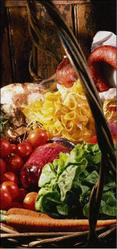Dieting trends for the new year
Published: Wednesday | January 7, 2009

As 2008 ends, what new dieting and exercise trends can be expected for 2009? Consumers are looking for nutrition on a budget, says Beth Hubrich, registered dietitian with the Calorie Control Council, an international association representing the low-calorie and reduced fat food and beverage industry.
With the slowdown in the economy, consumers are looking for more nutrition for their buck. There will also be a greater reliance on tools already at their fingertips, such as online dieting and nutrition sites. With increased workplace tensions, greater workloads and perhaps the need for an additional job, people will look for fitness activities that can be done in the workplace or at home. The council predicts five trends when it comes to dieting, weight loss and physical activity in 2009:
1. Consumers will 'budget' calories in the strapped economy. Although times are tough, consumers seem to understand that calories still count.
2. Increased consumption of foods and beverages with added benefits. Heightened consumer awareness of the relationship between diet and health has increased the demand for 'functional' foods - foods that can provide health benefits beyond basic nutrition.
3. Greater reliance on personalised online dieting tools for weight management such as ediets.com, freedieting.com or startyourdiet.com. A recent study by Kaiser Permanente found that recording food and beverage intake can double a person's weight loss, so having access to online options that allow people to record their calories is important.
4. Emergence of 'functional fitness' programmes that simulate real life activities. Traditional weight lifting has taken a back seat to these 'fitness that functions like you do' programmes such as carrying grocery bags while stair climbing or a new mom lifting a stroller instead of a weight set. The focus of these programmes is building a body capable of doing real-life activities in real-life positions.
5. Natural nutrition. Although there is no clear definition of 'natural', some consumers prefer foods and beverages they perceive as natural.
Q & A

Does non-fat milk have a lot more calcium than whole milk?
A: Just a little more. Milk averages 300 mg of calcium per cup, 30 per cent of your daily needs. Whole milk has about 290 mg, non-fat about 310. Processors do sometimes add extra milk solids to special non-fat milks to boost nutrients. Such milk typically contains 25 to 35 per cent more calcium, and the labels usually boast about the added calcium. That means it takes about three cups of milk to get 1,200 mg of calcium a day, instead of the usual four.
UC Berkeley Wellness Letter, January 2009.
www.creators.com


